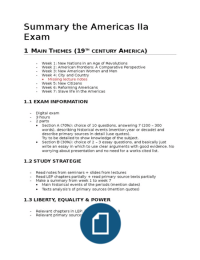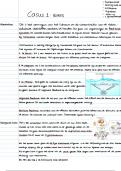Samenvatting
The Americas IIa Summary
- Vak
- The Americas IIa
- Instelling
- Rijksuniversiteit Groningen (RuG)
Een samenvatting over het vak the Americas IIa waar zowel hoorcolleges als seminars met enkele primaire teksten in staan. Het gaat over verschillende thema's in de 19e eeuw in Amerika.
[Meer zien]





